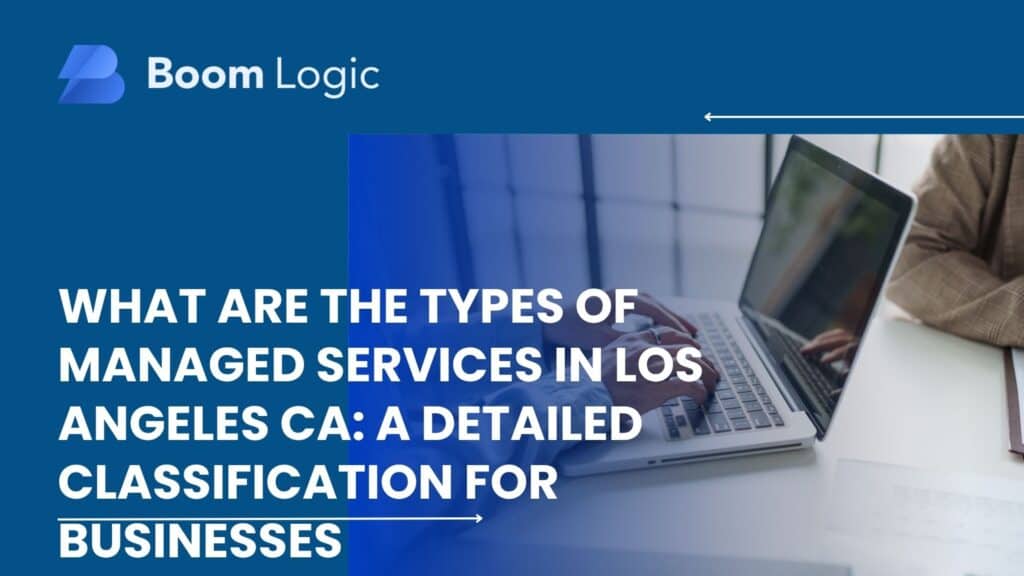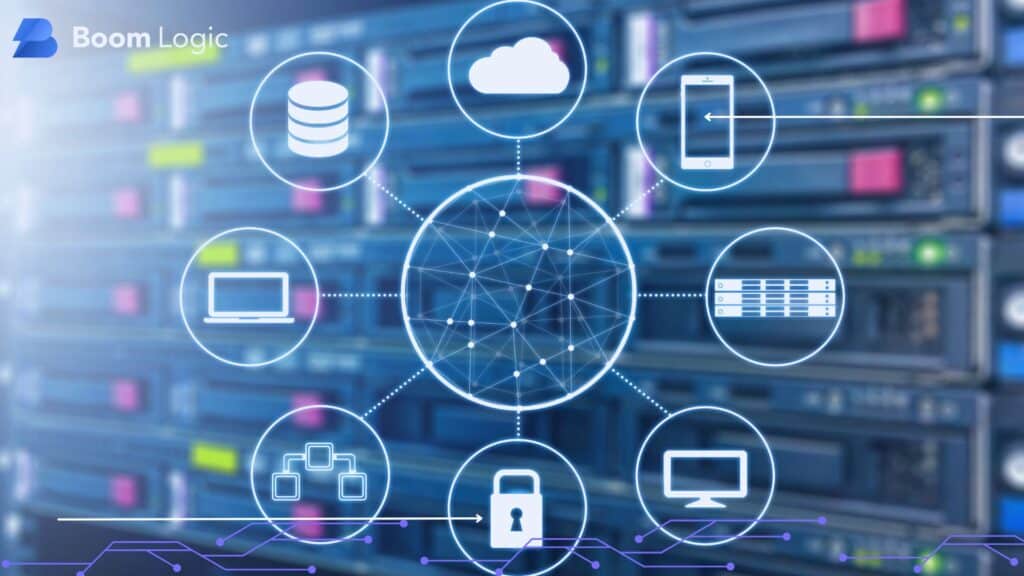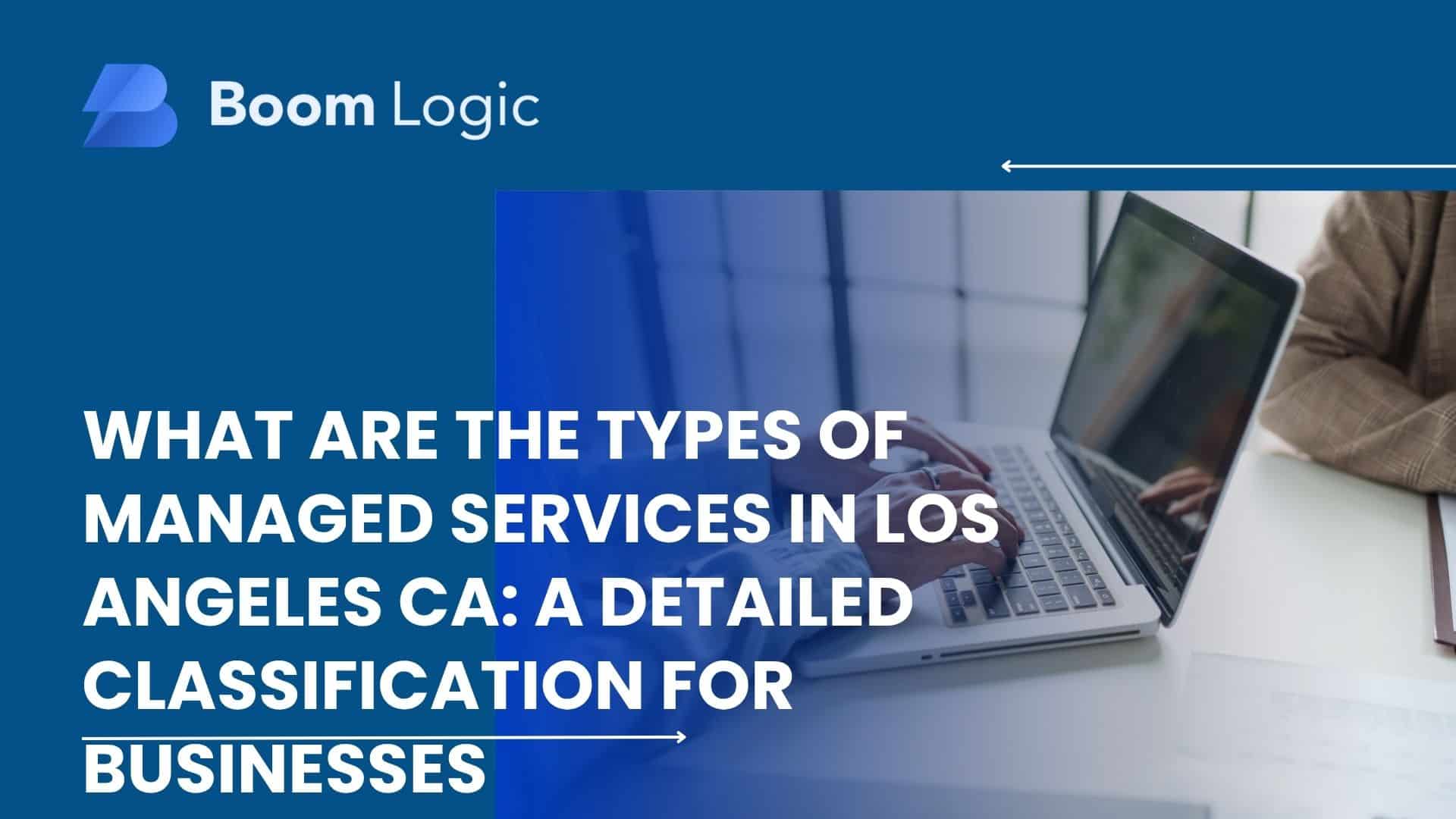
In today’s fast-paced business environment, Los Angeles companies face mounting pressure to maintain sophisticated technology infrastructures while focusing on their core operations. Managed services represent a strategic approach where businesses outsource specific IT functions to specialized providers who assume ongoing responsibility for maintaining, monitoring, and improving these systems. The diversity of managed service offerings available in Los Angeles reflects the varied needs of businesses operating in one of America’s most competitive markets. Understanding the distinct categories of managed services helps you make informed decisions about which solutions align with your organizational goals, budget constraints, and operational requirements. This comprehensive guide examines the major types of managed services available to Los Angeles businesses, exploring how each category addresses specific challenges and contributes to overall business success.
Key Takeaways
- Infrastructure Management Services monitor and maintain your network, servers, and hardware to prevent disruptions and optimize performance
- Security-Focused Services protect against cyber threats through continuous monitoring, threat detection, and incident response capabilities
- Cloud Solutions provide scalable computing resources with flexible deployment models for modern business needs
- Specialized Business Services address industry-specific requirements including compliance, disaster recovery, and communication systems
- Support Services deliver responsive technical assistance through helpdesk operations and dedicated staffing models
Overview
The managed services landscape in Los Angeles encompasses a wide spectrum of technology solutions designed to support businesses across industries and sizes. From fundamental infrastructure management to advanced cybersecurity protection, these services address critical operational needs while allowing companies to redirect internal resources toward strategic initiatives. This article explores the primary categories of managed services, examining how each type functions, the specific problems they solve, and the value they deliver to organizations. We’ll discuss infrastructure management, security services, cloud solutions, backup and disaster recovery, communication systems, and support models. You’ll discover how these services integrate with existing operations, the questions to ask when evaluating providers, and practical considerations for Los Angeles businesses selecting managed service solutions. Whether you’re considering your first managed service engagement or expanding existing arrangements, this guide provides the foundational knowledge needed to navigate your options confidently.
Infrastructure Management Services
Infrastructure management represents the foundation of managed service offerings, encompassing the continuous oversight of your network equipment, servers, workstations, and related hardware components. These services ensure that your technology backbone operates reliably, efficiently, and securely through proactive monitoring, maintenance, and optimization activities. Los Angeles businesses benefit from infrastructure management because it transforms technology from a reactive cost center into a predictable, stable asset that supports business objectives without constant internal attention.
Network monitoring and management forms the cornerstone of infrastructure services. Providers continuously track network performance metrics, bandwidth utilization, connection stability, and device health. This vigilance identifies potential issues before they impact operations—detecting unusual traffic patterns that might indicate security threats, spotting failing components that could cause outages, and recognizing performance bottlenecks that slow business processes. For Los Angeles companies operating across multiple locations or supporting remote workers, professional network monitoring becomes particularly valuable as it maintains consistent connectivity across distributed environments.
Server management services address the specialized requirements of maintaining server infrastructure, whether physical machines in your facility or virtual servers in data centers. Providers handle operating system updates, application patching, resource allocation, and performance tuning. They monitor server health indicators like CPU usage, memory consumption, disk space, and temperature levels. When issues arise, technicians respond according to predetermined protocols, often resolving problems before you’re aware they existed. This service proves especially beneficial for organizations running business-critical applications where server downtime directly translates to revenue loss or operational disruption.
Hardware Lifecycle Management
Hardware lifecycle management addresses the complete journey of physical equipment from procurement through deployment, maintenance, and eventual replacement. Managed service providers assess your current hardware inventory, develop replacement schedules based on manufacturer lifecycles and business requirements, and coordinate procurement to avoid emergency purchases at premium prices. This systematic approach prevents the common scenario where multiple critical systems reach end-of-life simultaneously, creating budget strain and operational risk.
Providers track warranty status, coordinate repairs with vendors, and maintain detailed documentation of your hardware environment. They recommend upgrades when newer technologies offer compelling advantages or when aging equipment poses reliability or security concerns. For Los Angeles businesses, this professional oversight means avoiding the hidden costs associated with aging infrastructure—increased energy consumption, frequent failures, compatibility issues with modern software, and reduced productivity as employees work with slower systems.
Security-Focused Managed Services

Security-focused managed services address the escalating cyber threats facing businesses of all sizes, providing specialized expertise and continuous vigilance that internal teams often cannot match. These services combine advanced technology tools with human expertise to detect, prevent, and respond to security incidents that could compromise sensitive data, disrupt operations, or damage your reputation.
Security Operations Center (SOC) services represent the most comprehensive security offering, where dedicated security teams monitor your environment around the clock. These specialists analyze security logs from multiple sources, investigate suspicious activities, and respond to confirmed threats according to established protocols. A SOC provides layers of protection that extend far beyond basic antivirus software—identifying sophisticated threats that evade traditional defenses, correlating events across different systems to recognize complex attack patterns, and maintaining current knowledge about emerging vulnerabilities affecting businesses globally.
Los Angeles companies benefit from SOC services because threat actors operate continuously without regard for business hours or holidays. An unmonitored security event at 2 AM can escalate into a major breach by morning. Professional SOC teams ensure someone with expertise is always watching, ready to contain incidents before they cause significant damage.
Vulnerability Assessment and Penetration Testing
Vulnerability assessment services systematically identify weaknesses in your technology environment that could be exploited by attackers. Providers scan your systems, applications, and network infrastructure using specialized tools that detect known vulnerabilities, misconfigurations, and security gaps. These assessments produce prioritized reports that help you understand your risk exposure and guide remediation efforts toward the most critical issues first.
Penetration testing takes security evaluation further by simulating actual attack scenarios. Ethical hackers employed by the managed service provider attempt to breach your defenses using the same techniques malicious actors would employ. This hands-on testing reveals not just theoretical vulnerabilities but actual exploitable weaknesses that could lead to compromise. The results provide compelling evidence for security investments and validate the effectiveness of existing protections. For regulated industries operating in Los Angeles, regular vulnerability assessments and penetration tests often satisfy compliance requirements while genuinely strengthening security posture.
Cloud-Based Managed Services
Cloud-based managed services deliver computing resources, applications, and storage through internet-connected infrastructure rather than on-premises hardware. These services provide flexibility, scalability, and accessibility that traditional infrastructure cannot match, allowing businesses to adjust resources according to changing demands without capital expenditure for physical equipment.
Infrastructure as a Service (IaaS) provides virtualized computing resources including servers, storage, and networking components. You gain access to enterprise-grade infrastructure without purchasing, housing, or maintaining physical equipment. This model proves particularly valuable for Los Angeles businesses facing real estate costs that make dedicated data center space expensive. Managed cloud server hosting eliminates the need for climate-controlled facilities, redundant power systems, and physical security measures while delivering reliable computing capacity.
IaaS providers handle hardware maintenance, capacity planning, and infrastructure monitoring. You control the operating systems, applications, and configurations running on the virtual infrastructure, maintaining operational flexibility while offloading physical management responsibilities. This arrangement supports disaster recovery strategies, development and testing environments, and seasonal scaling requirements more cost-effectively than traditional approaches.
Software as a Service Management
Software as a Service (SaaS) management addresses the growing complexity of cloud application portfolios. Most businesses now use dozens of cloud-based applications for communication, collaboration, customer relationship management, accounting, and industry-specific functions. Managing these disparate services—handling subscriptions, controlling access, ensuring data flows between systems, and maintaining security—creates administrative burden that diverts attention from productive work.
Managed service providers bring order to this chaos by maintaining inventories of cloud applications, managing user provisioning and deprovisioning, negotiating vendor relationships, and ensuring proper configuration. They implement single sign-on systems that simplify access while strengthening security, establish automated workflows that connect applications, and monitor application performance to ensure vendors deliver promised service levels. For growing Los Angeles companies, professional SaaS management prevents the “shadow IT” problem where employees adopt unauthorized applications that create security risks and compliance gaps.
Backup and Disaster Recovery Services

Backup and disaster recovery services protect your business data and ensure operational continuity when disruptive events occur. These services combine automated data protection with documented recovery procedures, providing confidence that your organization can resume operations following hardware failures, cyber incidents, natural disasters, or human errors.
Data backup management ensures complete, reliable copies of your business information exist in secure locations separate from production systems. Modern backup solutions employ automated scheduling that captures changes throughout the day without user intervention, encryption that protects backup data from unauthorized access, and verification processes that confirm backups are recoverable. Providers monitor backup completion, investigate failures, and manage retention policies that balance recovery needs against storage costs.
The frequency and comprehensiveness of backups should reflect the value of your data and your tolerance for data loss. Email systems, databases, and financial records might require hourly backups, while less critical information could be protected daily. Los Angeles businesses must consider geographic risks—earthquake potential argues for maintaining backup copies outside Southern California to ensure recovery capabilities survive regional disasters.
Business Continuity Planning
Business continuity planning extends beyond data protection to address complete operational recovery following significant disruptions. Managed service providers work with you to identify critical business functions, document dependencies on technology systems, establish recovery time objectives for different scenarios, and create detailed procedures that guide response efforts when disasters strike.
These plans document emergency contacts, system recovery sequences, alternative work arrangements, and communication protocols. Providers conduct regular testing that validates recovery procedures, identifies gaps in documentation, and familiarizes staff with their roles during incidents. Testing might involve restoring selected data from backups, activating failover systems, or conducting full disaster recovery exercises that simulate complete facility loss.
For Los Angeles companies, comprehensive business continuity planning addresses scenarios ranging from localized incidents like building fires to regional events like earthquakes or wildfires that could disrupt operations for extended periods. The planning process forces critical thinking about operational dependencies, reveals previously unrecognized vulnerabilities, and creates confidence that your organization can weather significant disruptions without catastrophic consequences.
Communication and Collaboration Services
Communication and collaboration services modernize how your team interacts internally and with customers, replacing aging phone systems and fragmented communication tools with integrated platforms that support contemporary work styles. These services combine voice calling, video conferencing, instant messaging, and file sharing in unified solutions that function seamlessly across office and remote locations.
Voice over IP (VoIP) management transitions phone systems from traditional circuits to internet-based communication. Managed VoIP services provide professional call handling features—automated attendants, call routing, voicemail to email, call recording, and detailed usage analytics—without requiring expensive on-premises equipment. Providers handle system configuration, troubleshoot audio quality issues, and manage the relationship with connectivity providers to ensure reliable service.
For Los Angeles businesses, VoIP delivers particular advantages. The technology supports remote workers as effectively as office-based employees, providing consistent communication capabilities regardless of location. Geographic expansion becomes simpler since new locations connect through internet connections rather than requiring traditional phone line installation. Cost savings often prove substantial—long-distance charges disappear, and adding users requires minimal incremental expense.
Unified Communications Platforms
Unified communications platforms integrate multiple communication channels into cohesive systems that improve productivity and responsiveness. Employees access voice calling, video meetings, screen sharing, instant messaging, and presence indicators through single interfaces. These platforms eliminate the friction of switching between disconnected tools, reduce the time spent locating colleagues, and provide communication flexibility that matches how people actually work.
Managed service providers implement these platforms, train users, establish governance policies, and optimize configurations for your specific workflows. They integrate unified communications with existing business applications—connecting to customer relationship management systems so sales teams can click to call prospects, linking with calendars to show availability, and enabling screen sharing during support calls. Professional management ensures your team extracts maximum value from these sophisticated tools rather than using only basic features while advanced capabilities remain undiscovered.
Compliance and Regulatory Services
Compliance and regulatory services help businesses meet industry-specific requirements and legal obligations related to data protection, privacy, and operational standards. These services prove essential for organizations in healthcare, finance, legal, and other regulated sectors where non-compliance carries serious consequences including fines, legal liability, and reputational damage.
Compliance as a Service provides ongoing assistance with regulatory frameworks like HIPAA for healthcare providers, PCI DSS for organizations processing credit card transactions, SOC 2 for service providers, and various privacy regulations. Providers assess your current compliance status, identify gaps between requirements and actual practices, implement necessary controls, and maintain documentation that demonstrates compliance during audits.
This service category delivers particular value because compliance requirements evolve continuously as regulations change and new guidance emerges. Maintaining internal expertise across multiple frameworks strains resources, especially for smaller organizations. Managed service providers specialize in compliance, staying current with regulatory developments and applying lessons learned across numerous client environments. They conduct regular compliance assessments, update controls as requirements change, and provide evidence packages that streamline audit processes.
Security Awareness Training
Security awareness training addresses the human element of security and compliance by educating employees about threats, safe practices, and their role in protecting organizational assets. Managed service providers deliver comprehensive training programs that include interactive modules, simulated phishing campaigns, and regular reinforcement activities that keep security awareness prominent in employees’ minds.
These programs teach employees to recognize social engineering attempts, create strong passwords, protect sensitive information, identify suspicious emails, and respond appropriately to potential security incidents. Simulated phishing campaigns send realistic but harmless phishing emails to employees, tracking who clicks suspicious links or provides credentials. Results guide additional training for those who need it while measuring overall security awareness across your organization.
For Los Angeles businesses, particularly those in regulated industries, documented security training satisfies compliance requirements while genuinely reducing risk. Employees who understand security threats make better decisions, report suspicious activities they might otherwise ignore, and become partners in protecting your organization rather than unknowing vulnerabilities that attackers exploit.
Technical Support and Helpdesk Services
Technical support and helpdesk services provide responsive assistance when technology issues disrupt work, ensuring employees receive timely help that minimizes productivity loss and frustration. These services function as the frontline of technology support, triaging incoming requests, resolving common issues, and escalating complex problems to specialized technicians.
Multi-tiered support models organize technical assistance into levels based on complexity and specialization. Tier 1 support handles common requests like password resets, basic troubleshooting, and user questions about standard applications. Tier 2 addresses more complex issues requiring deeper technical knowledge—application errors, connectivity problems, and hardware diagnostics. Tier 3 specialists tackle the most challenging problems involving system architecture, custom applications, or obscure technical issues.
This structure ensures efficient resource utilization by matching problems with appropriately skilled technicians. Simple issues receive immediate resolution without consuming expensive specialist time, while complex problems reach qualified experts who can solve them effectively. Los Angeles businesses benefit from clear escalation paths that prevent issues from languishing unresolved or bouncing between technicians who lack necessary expertise.
Service Level Agreements and Response Times
Service Level Agreements (SLAs) establish concrete commitments regarding support responsiveness and resolution timeframes. These agreements define how quickly the provider will respond to different types of requests, establish severity classifications that prioritize critical issues, and specify resolution targets that guide support efforts. SLAs might guarantee 15-minute response times for critical outages affecting multiple users, one-hour responses for high-priority individual issues, and four-hour responses for routine requests.
Well-structured SLAs provide accountability and set clear expectations for both parties. They include provisions for after-hours support, define what constitutes critical versus routine issues, and establish measurement and reporting mechanisms. For your organization, SLAs create confidence that technology problems receive appropriate attention based on their business impact rather than arbitrary factors.
Professional helpdesk services maintain detailed documentation of support interactions, tracking common problems, solution patterns, and user feedback. This information guides improvement efforts—identifying training needs, revealing problematic applications or systems, and highlighting areas where self-service resources could reduce support volume. Over time, this data-driven approach reduces support requirements while improving user satisfaction.
For businesses in the Los Angeles area seeking comprehensive technology support, Boom Logic offers the full spectrum of managed services discussed throughout this guide. Located at 1106 Colorado Blvd., Los Angeles, CA, 90041, our team delivers customized solutions that address the specific challenges facing Southern California businesses. Whether you need infrastructure management, security services, cloud solutions, or complete IT support, we provide responsive service backed by deep technical expertise. Contact us at +1 833 266 6338 to discuss how managed services can strengthen your technology foundation while allowing your team to focus on core business activities.
Common Questions About Types of Managed Services in Los Angeles CA
Q: How do managed services differ from traditional IT support?
A: Managed services emphasize proactive monitoring, prevention, and continuous improvement rather than reactive problem-solving. Traditional support responds after issues occur, while managed services work continuously to prevent problems, optimize performance, and plan strategically. The relationship shifts from transactional break-fix work to ongoing partnership focused on business outcomes rather than just technical fixes.
Q: Can businesses combine different types of managed services from multiple providers?
A: Organizations can engage multiple providers for different service categories, though this approach introduces coordination challenges. Different providers may use incompatible tools, create communication gaps, or generate confusion about accountability when issues span multiple areas. Most businesses find greater value in comprehensive relationships with providers offering integrated service portfolios, though specialized providers sometimes make sense for unique requirements.
Q: What factors should influence which types of managed services a business prioritizes?
A: Priority decisions should reflect your risk profile, compliance requirements, internal capabilities, and strategic goals. Start by assessing critical vulnerabilities—security gaps, aging infrastructure, or inadequate backup protection—that pose immediate risks. Consider which internal functions consume disproportionate staff time relative to their strategic value. Evaluate growth plans that might strain existing resources. Budget constraints naturally influence prioritization, but remember that preventive services often cost less than reactive emergency responses.
Q: How quickly can businesses implement managed services?
A: Implementation timeframes vary significantly based on service complexity and your environment’s current state. Basic monitoring and support services might activate within days, while comprehensive infrastructure management or cloud migrations could require weeks or months. Most providers conduct initial assessments before quoting timeframes, examining your existing environment, documentation quality, and any immediate issues requiring attention. Gradual rollouts often work better than attempting complete transformation simultaneously.
Q: Do managed services require businesses to replace existing technology?
A: Quality providers work with existing technology rather than mandating wholesale replacement. They assess current systems, identify genuine issues requiring modernization, and propose cost-effective solutions that might include partial upgrades, configuration improvements, or strategic replacements. Beware providers who immediately recommend replacing everything—this often reflects their preference rather than your actual needs. Transitions should be justified by business requirements, not provider convenience.
Q: How do managed service providers ensure they understand industry-specific requirements?
A: Experienced providers develop industry expertise through client concentration in specific sectors. They maintain certifications in relevant frameworks, participate in industry associations, and study regulatory requirements affecting their clients. When evaluating providers, ask about their experience in your industry, request references from similar organizations, and assess their understanding of your specific compliance obligations and operational workflows during initial conversations.
Q: What happens if a business outgrows or changes needs for certain managed services?
A: Professional service agreements include provisions for adjusting scope as needs change. Growing businesses might add users, locations, or service categories. Companies facing budget constraints might reduce service levels or postpone planned initiatives. The best provider relationships accommodate change through flexible contracts that allow additions, reductions, or modifications without penalties. Discuss change management processes before engaging services to understand how adjustments work.
Q: How do businesses measure whether managed services deliver value?
A: Value measurement combines quantitative metrics with qualitative assessment. Track system uptime, support response times, security incident frequency, and infrastructure performance indicators. Compare technology costs before and after engaging managed services, accounting for both direct expenses and opportunity costs of internal staff time redirected toward strategic work. Assess whether technology enables business initiatives more effectively or creates fewer operational frustrations. Request regular reporting from providers showing these metrics and discussing improvement trends.
Choosing the Right Mix of Managed Services for Your Business Success
The diverse landscape of managed services available to Los Angeles businesses offers solutions for virtually every technology challenge organizations face. From foundational infrastructure management that keeps systems running reliably to advanced security services that protect against sophisticated threats, each service category addresses specific needs while contributing to overall operational excellence. Cloud-based services provide flexibility and scalability that traditional infrastructure cannot match, while backup and disaster recovery solutions ensure business continuity regardless of what disruptions occur. Communication services modernize how teams collaborate, compliance services navigate complex regulatory requirements, and responsive support services minimize the productivity impact of inevitable technology issues. The key to maximizing value lies not in adopting every available service but in thoughtfully selecting those that address your most pressing needs, fill critical capability gaps, and align with strategic business objectives. As your organization grows and evolves, your managed service requirements will naturally shift—what begins as basic infrastructure monitoring might expand into comprehensive security, cloud, and compliance services over time. Partnering with a provider who understands this evolution and offers integrated services that grow with your needs creates the foundation for long-term technology success in Los Angeles’s competitive business environment.


